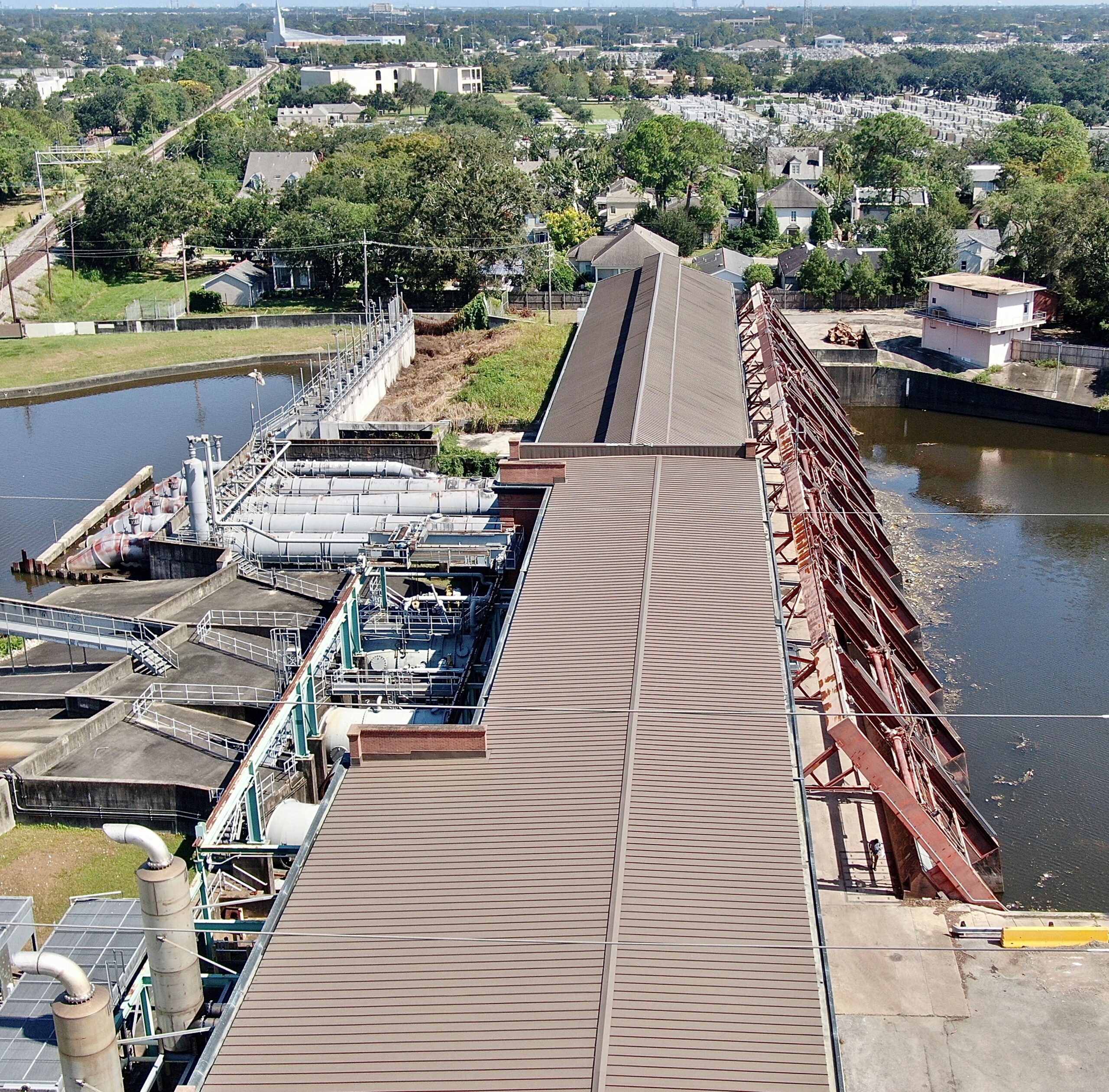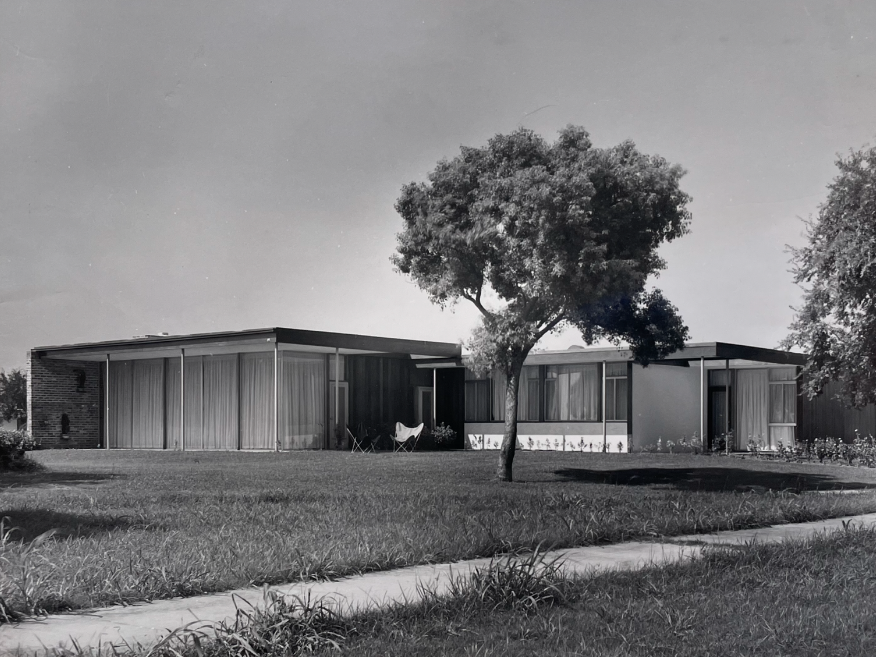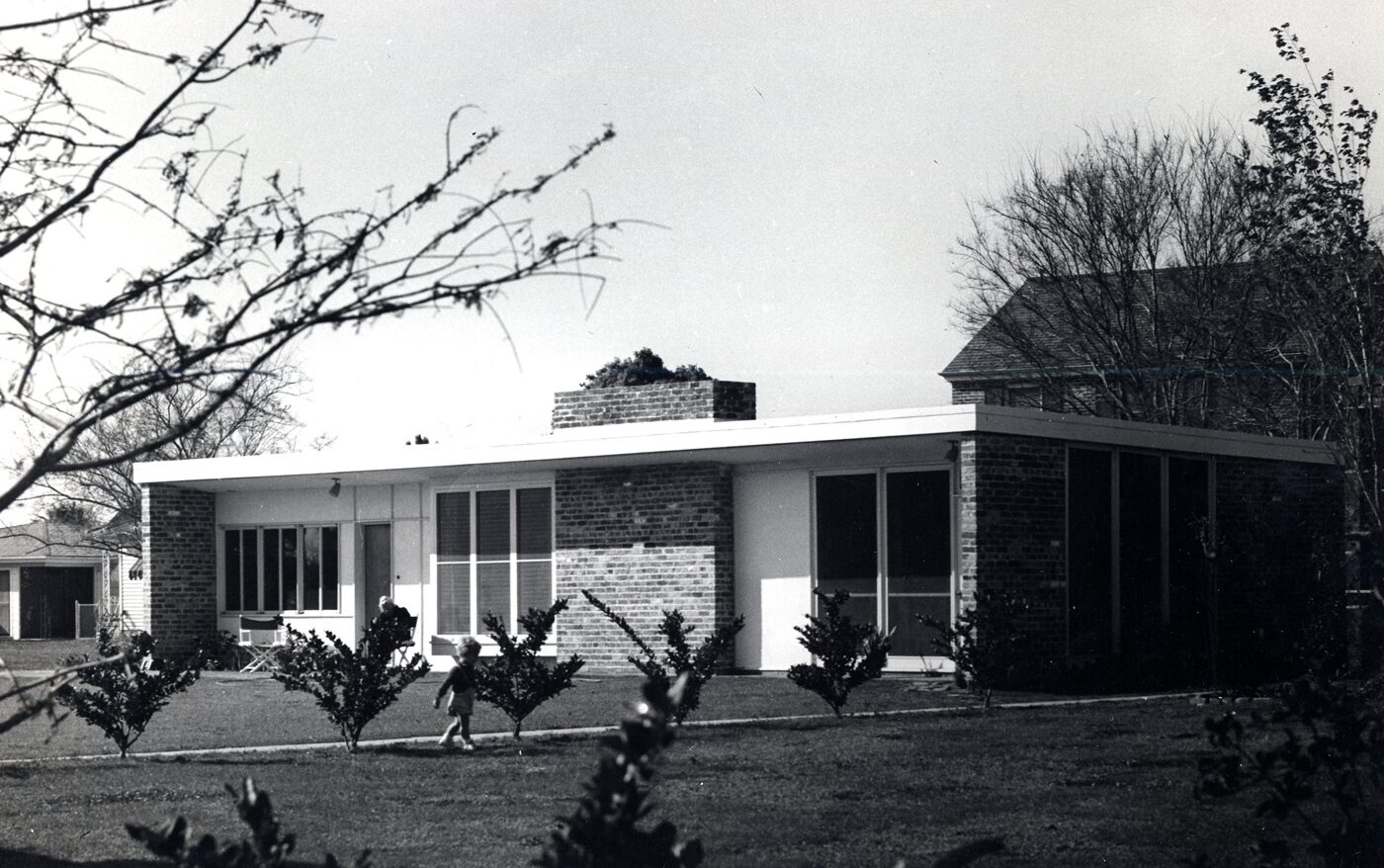Above drone photo by Marco Rasi, with Richard Campanella, 2021
This news brief appeared in the June/July issue of PRC’s Preservation in Print magazine. Interested in getting more preservation stories like this delivered to your door? Become a member of the PRC for a subscription!
The American Society of Civil Engineers has designated the New Orleans Drainage System as a Historic Civil Engineering Landmark, placing it on a list of human-made marvels that includes the Eiffel Tower and Suez Canal. The ASCE Louisiana Section History and Heritage Committee nominated the drainage system and other notable public works in the state, including the Lake Pontchartrain Causeway, Huey P. Long Bridge and Bonnet Carré Spillway.
On May 23, the Sewerage and Water Board of New Orleans held a dedication ceremony at Pumping Station Six, unveiling a plaque on the building, which was constructed in stages beginning in 1899. With a capacity of 9,580 cfs (cubic feet per second), the station is the largest in the board’s network of pipes, canals and pumps. It handles stormwater from Uptown New Orleans (via the Palmetto Canal) and a portion of Old Metairie, with Jefferson Parish contributing funds to operations and maintenance. The station was affected by the failure of electricity turbines at the board’s Carrollton generating station in 2017, which caused significant flooding in some areas of the city and initiated a $225 million overhaul of the board’s power system now underway.
“It is a great honor to have this foundational piece of our built environment join an esteemed list of 250 projects that have shaped the world, said Sewerage and Water Board Executive Director Ghassan Korban, adding that the agency’s goal is “to enhance the resiliency of our drainage system to serve our community better.” Also speaking at the event were Colonel Cullen Jones of the U.S. Army Corps of Engineers, University of New Orleans professor and former ASCE national president Norma Jean Mattei, and current president of the ASCE New Orleans Branch Kyle Galloway.
The New Orleans City Council adopted a plan put forward by the New Orleans Drainage Commission in 1895; the Sewerage and Water Board was established four years later. Absent such a system, large swaths of the city would remain swampy and undevelopable. The system’s first pumping stations became operational in 1900. By 1914, the system with a combined capacity of 4,600 cfs drained as much as 35 square miles but was inadequate for major storms. The system’s capacity doubled the following year with the installation of new pumps designed by Albert Baldwin Wood, a New Orleans native and Tulane University graduate.
Waves of expansion would follow, as would tragic floods due to extreme storms and levee failures. Most notably Hurricane Katrina inundated numerous pump stations. Crews who had remained on site through the storm had to drain the stations and repair equipment before dewatering the city. Crewmembers recounted the saga during a tour of the pump station following the ceremony, noting with pride several pumps that remain running after a century.
Nathan Lott is PRC’s Policy Research Director and Advocacy Coordinator.








